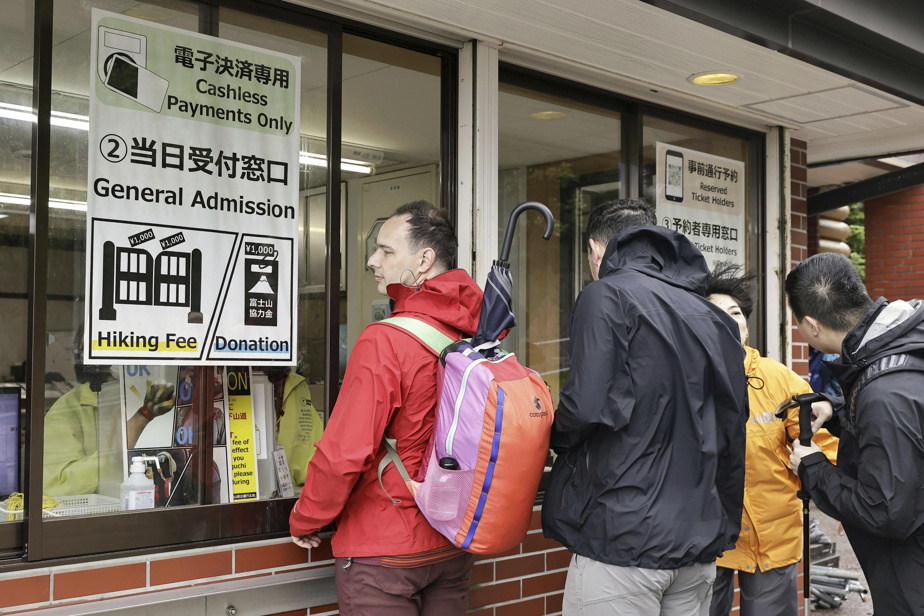The introduction of a right of access and quotas for the ascent of Mount Fuji from Monday has been rather well received by hikers who are starting the summer season on the famous Japanese volcano.
Despite the wind sweeping the slopes and the completely overcast sky, tourists are there on the Yoshida trail, the foot of which can be reached by bus.
A major new feature for this 2024 season is that ticket offices invite hikers to pay a financial contribution to be able to reach the summit of the mountain.
“I really like this idea. I think Japan has done a good job imposing restrictions to limit the number of people. And the amount is not very high,” Chetna Joshi, a 47-year-old Indian hiker, told AFP.
A fee of 2,000 yen ($17) is now required to hike the Yoshida Trail, the most popular of the four leading to the summit of Mount Fuji (3,776 m), and a maximum number of 4,000 people per day is allowed.
Three thousand sesames can be obtained daily via an online reservation site and the other 1,000 are available on site the same day.
On the other hand, the other three trails, used by 40% of hikers, remain freely accessible and free.
Covered in snow for most of the year, Mount Fuji, immortalized by Hokusai and located about two hours from Tokyo by train or bus, attracts more than 220,000 visitors during the hiking season from July to September.
David Grosshode, an American hiker, sees no problem with these measures.
“There are a lot of mountains where I live and they put a cap of 100 to 120 (climbers), so 4,000 is still a lot. But we see that they have the necessary infrastructure to preserve nature. I think the entrance fee is not bad either, just to preserve nature,” explains the 35-year-old.
“Protect the lives” of hikers

PHOTO ISSEI KATO, REUTERS
Covered in snow for most of the year, Mount Fuji, located about two hours from Tokyo by train or bus, attracts more than 220,000 visitors during the hiking season from July to September.
The new measures were introduced “first and foremost to protect the lives” of hikers, but not to prevent them from coming, the governor of Yamanashi prefecture, Kotaro Nagasaki, recently explained.
Four bodies were found near the summit last week, according to local media. Every year, Japanese media report on tourists climbing Mount Fuji without the proper equipment.
“Sometimes I feel uncomfortable because of the crowds. And for people’s safety, I think it is desirable to limit the maximum number of people for a specific place,” rejoices Sylvain Wagner, a 32-year-old French tourist, cap screwed on his head.
Last year, Japan attracted more than 25 million foreign tourists and last month its tourism chief unveiled an ambitious target of 60 million visitors a year.
In March, Japan crossed the threshold of 3 million visitors in one month for the first time in its history. This level was again reached in April and May.
Overtourism sometimes forces local authorities to take radical measures. Like the town of Fujikawaguchiko, near Mount Fuji, which in May erected a large tarpaulin obscuring a popular view of the volcano to dissuade tourists from taking photos.
The town’s residents were tired of the incivility of visitors looking for a photo to share on social media.
On the slopes of Mount Fuji, there is no tarpaulin and it is clearly not the admission fee that will prevent hikers from realizing their dream.
The only obstacle comes from the sky. Like this Monday with the natural elements, wind and rain, which dampened many hopes of reaching the summit.
“I love the mountains. I think she didn’t give me permission this time, it doesn’t matter. I accept it,” explained Indian Chetna Joshi, happy despite everything to have had a “great experience”.
